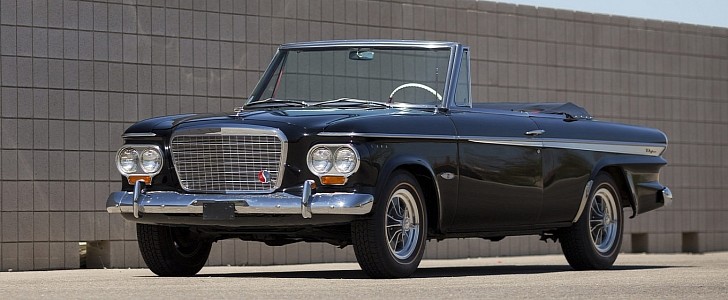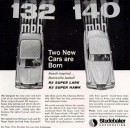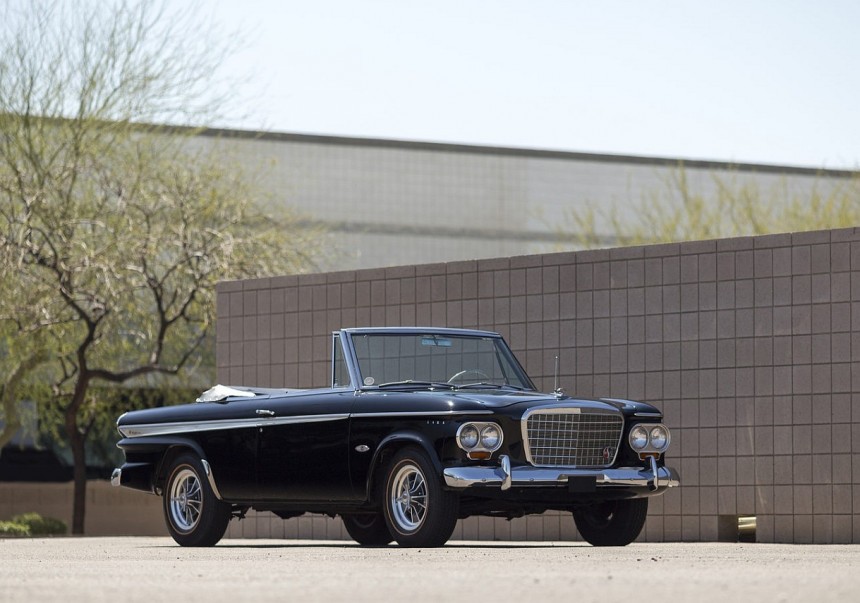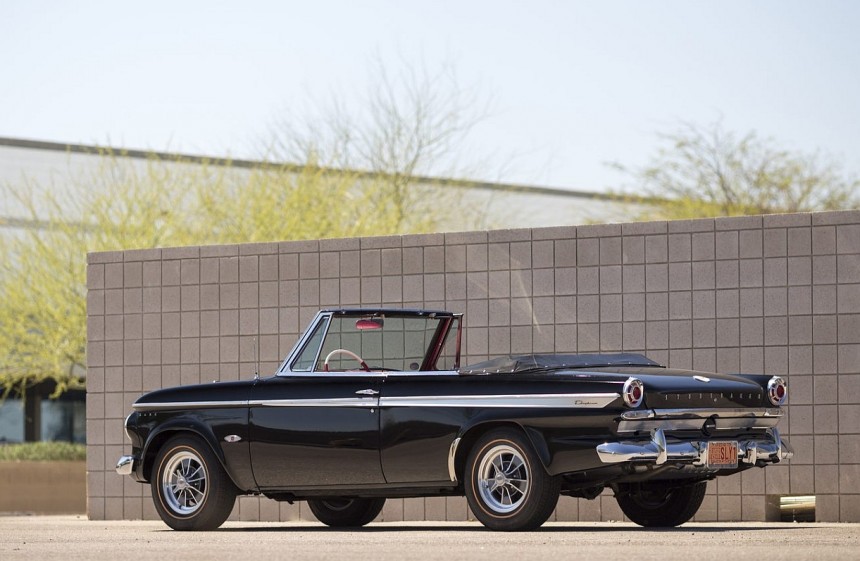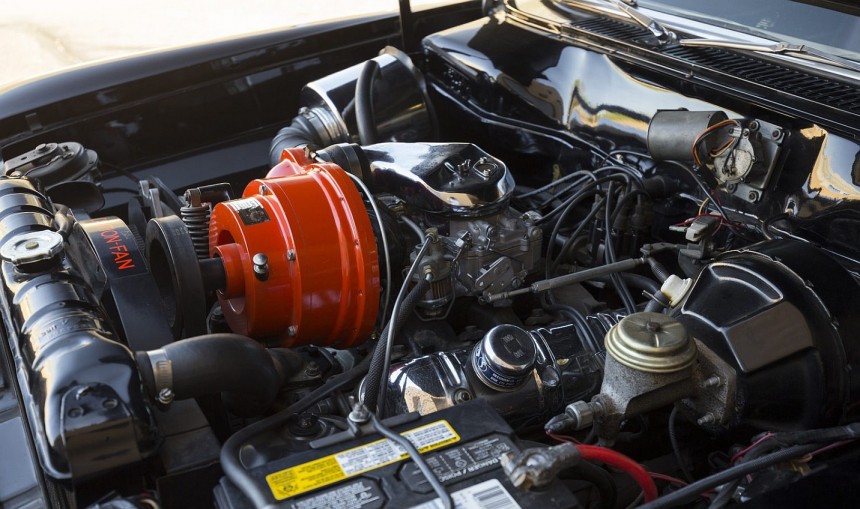Founded in 1852 as a manufacturer of wagons, carriages, and harnesses, Studebaker entered the automotive business in 1902. The company designed a host of now-iconic automobiles until it went into the history books in 1967, but few enthusiasts remember the Super Lark.
The story of this limited-edition, compact-sized supercar started in 1959 when the Indiana-based automaker introduced the Lark. With the Studebaker-Packard Corporation losing money and unable to compete with the Big Three in the full-size market, president Harold E. Churchill suggested that Studebaker should focus on designing a new compact car.
Looking to keep development costs as low as possible, Studebaker designed the Lark around the body shell of its mid-1950s full-sized automobiles. By shortening the wheelbase and reducing the overhangs, Studebaker made the Lark only 184 inches (4,700 mm) long, about 18 inches (457 mm) shorter than the Champion.
And despite its smaller footprint, the Lark could still seat six people comfortably and provide room for a surprising amount of luggage.
The compact became a big hit in its first year on the market, moving more than 130,000 units. Sales remained strong in 1960, but deliveries dropped in 1961 when the compact market got new entrants from GM, Ford, and Chrysler.
Not only did Ford introduce the popular Falcon in 1960, but Pontiac immediately followed with the Tempest. In 1961, the market got even more crowded with the arrival of the Dodge Lancer, Chevy II, and Oldsmobile F-85.
In an attempt to keep the Lark interesting, Studebaker introduced several updates for 1961. The compact remained largely the same design-wise, but the company also transferred the 289-cubic-inch (4.7-liter) V8 engine from the Hawk lineup as a performance-oriented option.
Rated at 210 horsepower, the 289 V8 gave the Lark a significant edge over the Ford Falcon, which didn't get a V8 (that was notably less powerful) until 1963. But sales were still going down, so Studebaker commissioned noted industrial designer Brooks Stevens to give the Lark a facelift for 1962. More importantly, the second-gen compact spawned the mighty Super Lark.
The revised Lark arrived right when Studebaker was rolling out the Avanti. A flagship sports car with a fiberglass body, the Avanti was designed to save the company, which was hemorrhaging money in the early 1960s.
Introduced in 1962, the Avanti was available with the same 289 V8 that Studebaker was already offering in the Hawk and Lark, but it also got a supercharged version of the mill.
Forced induction wasn't new to Studebaker though. The company introduced a Paxton-supercharged 289 as early as 1958, but the Avanti was offered with a more powerful, 289-horsepower version of the V8.
With this engine, the Avanti not only became America's fastest production car but also broke no fewer than 29 world speed records at the Bonneville Salt Flats.
As the company struggled to keep the troublesome, fiberglass-bodied Avanti in production, Studebaker engineers noticed that the new supercharged V8 would fit in the Lark. Studebaker didn't waste any time and began advertising the force-fed Lark alongside a similar version of the Hawk.
Using the tagline "Avanti-inspired... Boneville-tested!," the ad claimed a top speed of 132 mph (212 kph) for the Super Lark and 140 mph (225 kph) for the Super Hawk. While notably lower than the Avanti's record-setting benchmark, the figure turned the Lark into America's fastest compact car.
On top of that, the supercharged Lark was capable of hitting 60 mph (97 kph) from a standing start in 7.3 seconds. For reference, the V8-powered Ford Falcon needed more than 10 seconds to get there, while the most powerful Pontiac Tempest covered the distance in more than eight clicks.
But the Super Lark was more than just a regular Lark with a supercharged 289. The "Super" badge was only added to the car when it was ordered with the optional High Performance Package.
The bundle added a limited-slip differential, a heavy-duty cooling system, and sportier suspension components.
It also included power front disc brakes, special badges, and a 160-mph (257-kph) speedometer, but its main purpose was to improve the car's handling.
Sadly, much like the Avanti, the Super Lark arrived too late and Studebaker was forced to close shop before it could build a name for itself in the sports car market. The company fitted just 325 Larks with the supercharged 289 V8 and only 53 of them left the factory as optioned-up Super Larks.
Just like the Avanti, the Super Lark had a rather sad and unfortunate fate. However, it went into the history books as America's first compact muscle car. Still overshadowed by beefed-up Chevrolet Novas and Dodge Darts from the late 1960s, the Super Lark remains a diamond in the rough.
Looking to keep development costs as low as possible, Studebaker designed the Lark around the body shell of its mid-1950s full-sized automobiles. By shortening the wheelbase and reducing the overhangs, Studebaker made the Lark only 184 inches (4,700 mm) long, about 18 inches (457 mm) shorter than the Champion.
And despite its smaller footprint, the Lark could still seat six people comfortably and provide room for a surprising amount of luggage.
The compact became a big hit in its first year on the market, moving more than 130,000 units. Sales remained strong in 1960, but deliveries dropped in 1961 when the compact market got new entrants from GM, Ford, and Chrysler.
In an attempt to keep the Lark interesting, Studebaker introduced several updates for 1961. The compact remained largely the same design-wise, but the company also transferred the 289-cubic-inch (4.7-liter) V8 engine from the Hawk lineup as a performance-oriented option.
Rated at 210 horsepower, the 289 V8 gave the Lark a significant edge over the Ford Falcon, which didn't get a V8 (that was notably less powerful) until 1963. But sales were still going down, so Studebaker commissioned noted industrial designer Brooks Stevens to give the Lark a facelift for 1962. More importantly, the second-gen compact spawned the mighty Super Lark.
The revised Lark arrived right when Studebaker was rolling out the Avanti. A flagship sports car with a fiberglass body, the Avanti was designed to save the company, which was hemorrhaging money in the early 1960s.
Forced induction wasn't new to Studebaker though. The company introduced a Paxton-supercharged 289 as early as 1958, but the Avanti was offered with a more powerful, 289-horsepower version of the V8.
With this engine, the Avanti not only became America's fastest production car but also broke no fewer than 29 world speed records at the Bonneville Salt Flats.
As the company struggled to keep the troublesome, fiberglass-bodied Avanti in production, Studebaker engineers noticed that the new supercharged V8 would fit in the Lark. Studebaker didn't waste any time and began advertising the force-fed Lark alongside a similar version of the Hawk.
On top of that, the supercharged Lark was capable of hitting 60 mph (97 kph) from a standing start in 7.3 seconds. For reference, the V8-powered Ford Falcon needed more than 10 seconds to get there, while the most powerful Pontiac Tempest covered the distance in more than eight clicks.
But the Super Lark was more than just a regular Lark with a supercharged 289. The "Super" badge was only added to the car when it was ordered with the optional High Performance Package.
The bundle added a limited-slip differential, a heavy-duty cooling system, and sportier suspension components.
Sadly, much like the Avanti, the Super Lark arrived too late and Studebaker was forced to close shop before it could build a name for itself in the sports car market. The company fitted just 325 Larks with the supercharged 289 V8 and only 53 of them left the factory as optioned-up Super Larks.
Just like the Avanti, the Super Lark had a rather sad and unfortunate fate. However, it went into the history books as America's first compact muscle car. Still overshadowed by beefed-up Chevrolet Novas and Dodge Darts from the late 1960s, the Super Lark remains a diamond in the rough.
